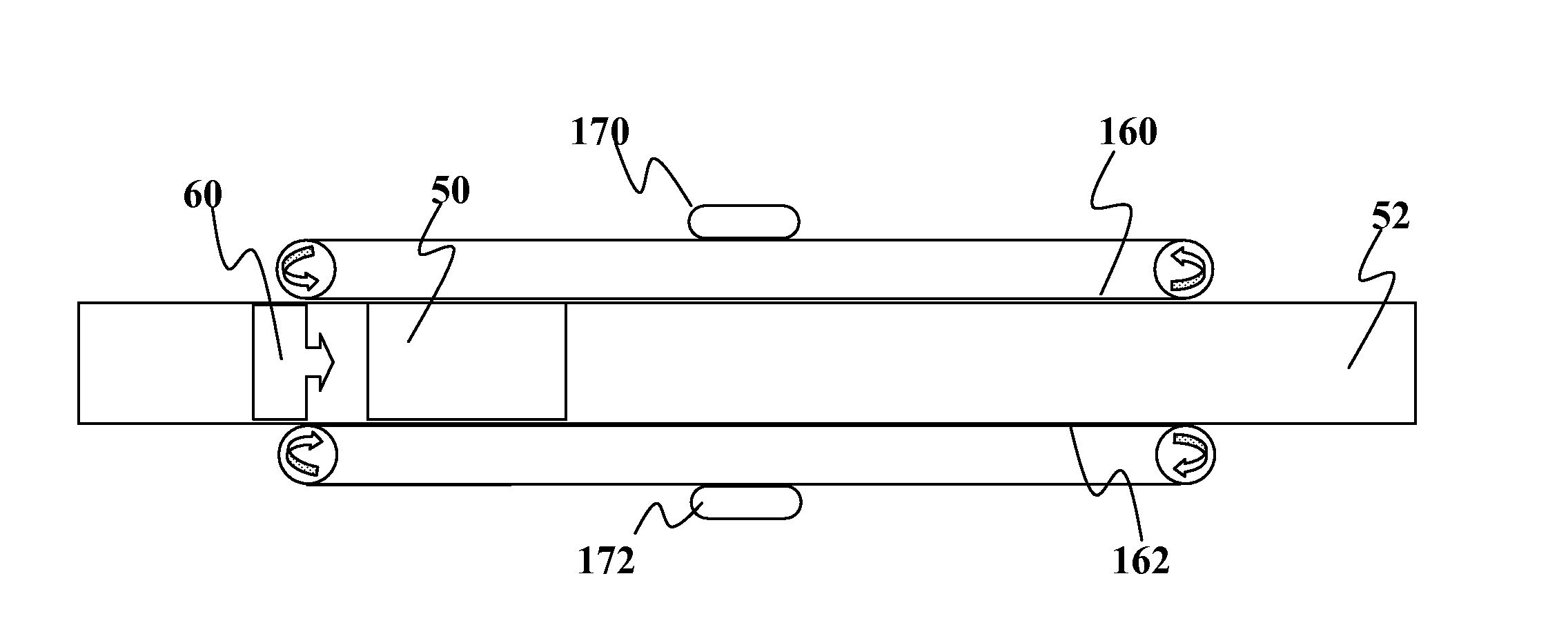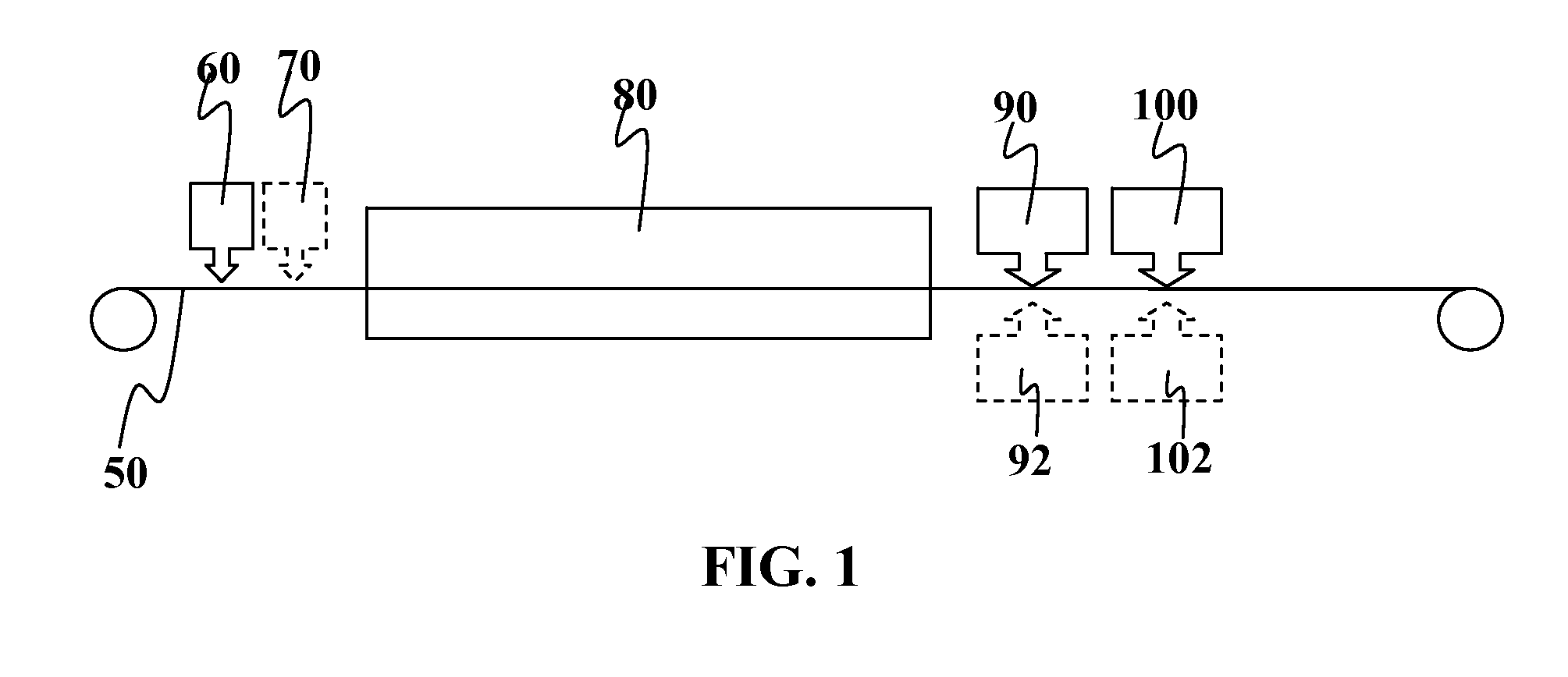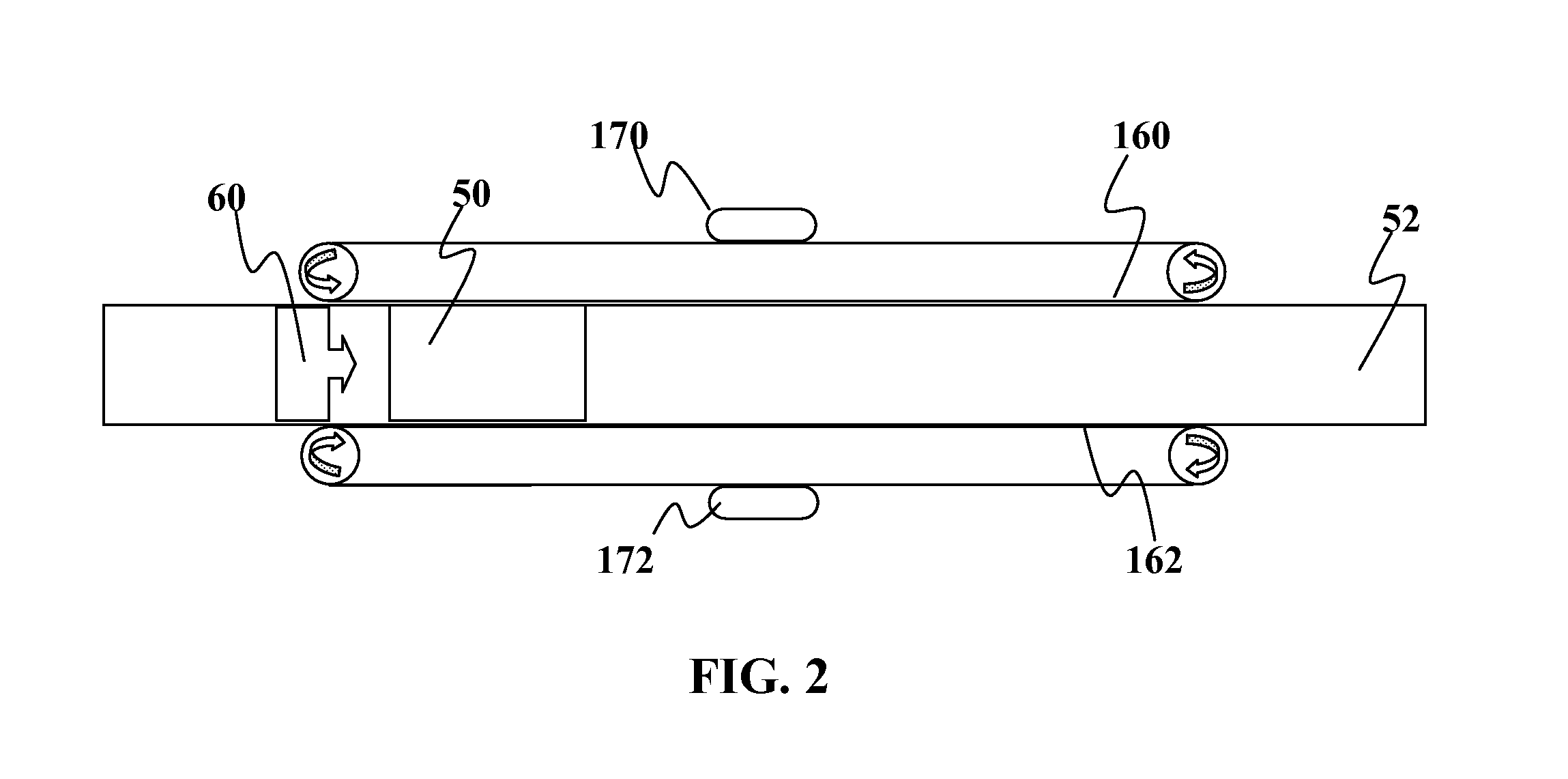Anti-reflective coating
a coating and anti-reflective technology, applied in the field of coatings, can solve the problems of destructive interference, constructive interference in the corresponding transmitted signal, and increase the light absorbance beyond the interfa
- Summary
- Abstract
- Description
- Claims
- Application Information
AI Technical Summary
Benefits of technology
Problems solved by technology
Method used
Image
Examples
example 1
Increase Solvent
[0053]TiO2-based surfactant templated films with roughly 10 nm-20 nm diameter pores can be formed from a precursor sol with increased solvent concentration. In this example, the precursor sol used titanium ethoxide as the alkoxide, Pluronic P123 or F127 as the surfactant, HCl, as the condensation inhibitor, water, and ethanol as the solvent in the following molar ratios:
[0054][Surfactant] / [X]: from about 9×10−8 to about 1×10−2
[0055][Solvent] / [X]: from about 10 to about 50
[0056][Condensation Inhibitor] / [X]: from about 0.1 to about 3
[0057][water] / [X]: from about 0.1 to about 10
example 2
Use of a Pore-Swelling Agent
[0058]TiO2-based surfactant templated films with roughly 10 nm-30 nm diameter pores can be formed from a precursor sol using trimethyl benzene as a pore-swelling agent (PSA). The precursor sol can use titanium ethoxide as the alkoxide, Pluronic F127 as the surfactant, HCl or HOAc, as the condensation inhibitor, water and ethanol as the solvent in the following molar ratios:
[0059][Surfactant] / [X]: from about 9×10−8 to about 1×10−2
[0060][Solvent] / [X]: from about 10 to about 50
[0061][Condensation Inhibitor] / [X]: from about 0.1 to about 3
[0062][water] / [X]: from about 0.1 to about 10
[0063][PSA] / [X]: from about 0.1 to about 3
example 3
Use of a Chelating Agent
[0064]TiO2-based surfactant templated films with roughly 20 nm-50 nm diameter pores can be formed from a precursor sol using pre chelated titania or generated in situ using Acetic acid or 2,4-pentanedione as a chelating agent. Acetic acid can also serve as a condensation inhibitor. The precursor sol can use titania diisopropoxide(bis-2,4-pentadioneate) as the alkoxide, Pluronic P123 or others as the surfactant, and ethanol as the solvent in the following molar ratios:
[0065][Surfactant] / [Ti]: from about 9×10−8 to about 1×10−3;
[0066][Solvent] / [Ti]: from about 10 to about 50;
[0067][Chelator] / [Ti]: from about 1 to about 3.
[0068][Condensation Inhibitor] / [X]: from 0 to about 5.
Alternative Embodiments
[0069]In addition to the use of silica coatings, titania coatings can be used, which, in addition to being similarly optically transparent, also harbor auto-catalytic self-cleaning properties that are useful to remove debris and impurities from the surface of solar glas...
PUM
| Property | Measurement | Unit |
|---|---|---|
| Thickness | aaaaa | aaaaa |
| Thickness | aaaaa | aaaaa |
| Diameter | aaaaa | aaaaa |
Abstract
Description
Claims
Application Information
 Login to View More
Login to View More - R&D
- Intellectual Property
- Life Sciences
- Materials
- Tech Scout
- Unparalleled Data Quality
- Higher Quality Content
- 60% Fewer Hallucinations
Browse by: Latest US Patents, China's latest patents, Technical Efficacy Thesaurus, Application Domain, Technology Topic, Popular Technical Reports.
© 2025 PatSnap. All rights reserved.Legal|Privacy policy|Modern Slavery Act Transparency Statement|Sitemap|About US| Contact US: help@patsnap.com



